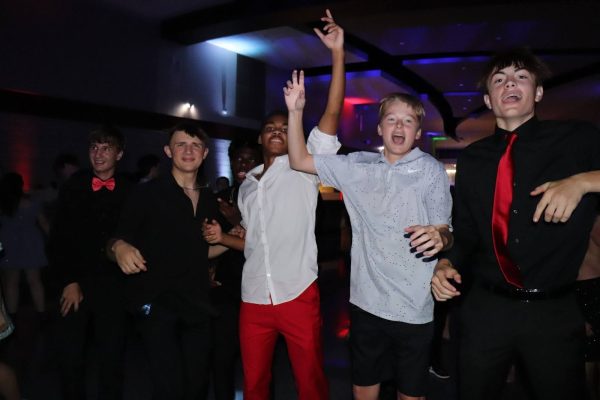Do Video Games Cause Violence?
From rock ‘n roll to the occult, many things in pop culture have been blamed for violence in society. In an era of technology, the most popular explanation for this violence has shifted to video games.
Monika Baechler // https://pixabay.com/photos/game-video-gaming-controller-hands-1232879/
Video games have been blamed over and over for violence in youth, but studies have shown that there is no causal link between the two.
Video game violence has often been connected to violence in the real world. Many politicians campaign on this line of thinking, and many parents use this as an excuse for their children not to play video games. However, the link between real-world criminal behavior, specifically in youth, and video games is less than what most people believe.
Blaming video games for violence in youth is not a new phenomenon. This scapegoat has been used for years since the first releases of Mortal Kombat in 1992 and earlier. But research shows that there is no causal link between criminal activity and violence in video games.
Of the past 33 school shootings since 1980, the era when video games first became popular, only four of the perpetrators have been identified as fans of video games. The most common variable between the 33 school shooters is a history of mental illness and antisocial or obsessive behavior.
“There are lots and lots of studies that prove that video games have no relation to violence. Usually, the people who commit those acts have a different reason,” said Caden Schweitzer, junior and co-founder of the Gaming Club at Liberty.
Many argue that the issue at hand is gun control reform and not banning violent video games. Some politicians use video games as an excuse for youth criminal behavior because gun control is an issue that might cause a loss of votes.
“I find it more plausible that America’s long-standing culture of gun violence has affected video games, as a form of culture, than the other way around,” Naomi Clark, an independent game developer and co-chair of New York University’s Game Center program, commented. “After all, this nation’s cultural traditions and attachments around guns are far older than video games.”
However, there is still a way to regulate and rate video games. The Entertainment Rating Software Board (ESRB) was founded in 1994 in order to provide age-based categories and information regarding the content. There are six different rating categories dependent on age and numerous content descriptions, ranging from fantasy violence to the use of alcohol to strong language. They also regulate how video games are marketed, especially the mature and adult-rated games.
“[I think that it should stay] the same and just enforce the rating system to the best of your ability,” said Cameron McKnight, junior and the other co-founder of the Gaming Club.
While some video games add thoughtless violence just for the thrill, many use violence as a pivoting factor in the story. Games like Undertale have violence as a choice, hoping the player would opt for the more moral solution.
“As an example, Hotline Miami has extreme violence but also makes you think about what you are doing. Your mind fills in the gaps cause it’s not realistic,” said Schweitzer. “A lot of characters in the game wear animal masks, [which signifies] how soldiers are animals, and they enjoy violence [because] it is their nature. It kind of breaks the fourth wall and [asks] ‘as the person playing the game do you like hurting other people?’ It’s self-reflection in that way.”
“Whatever game has whatever lesson they want. That’s the joy about video games: you can literally do whatever,” said McKnight.

Lauren De Young, senior, is on the staff for the third year. At Liberty, she is involved in INSHOC, NHS, and journalism. Lauren loves volunteering, recently...













